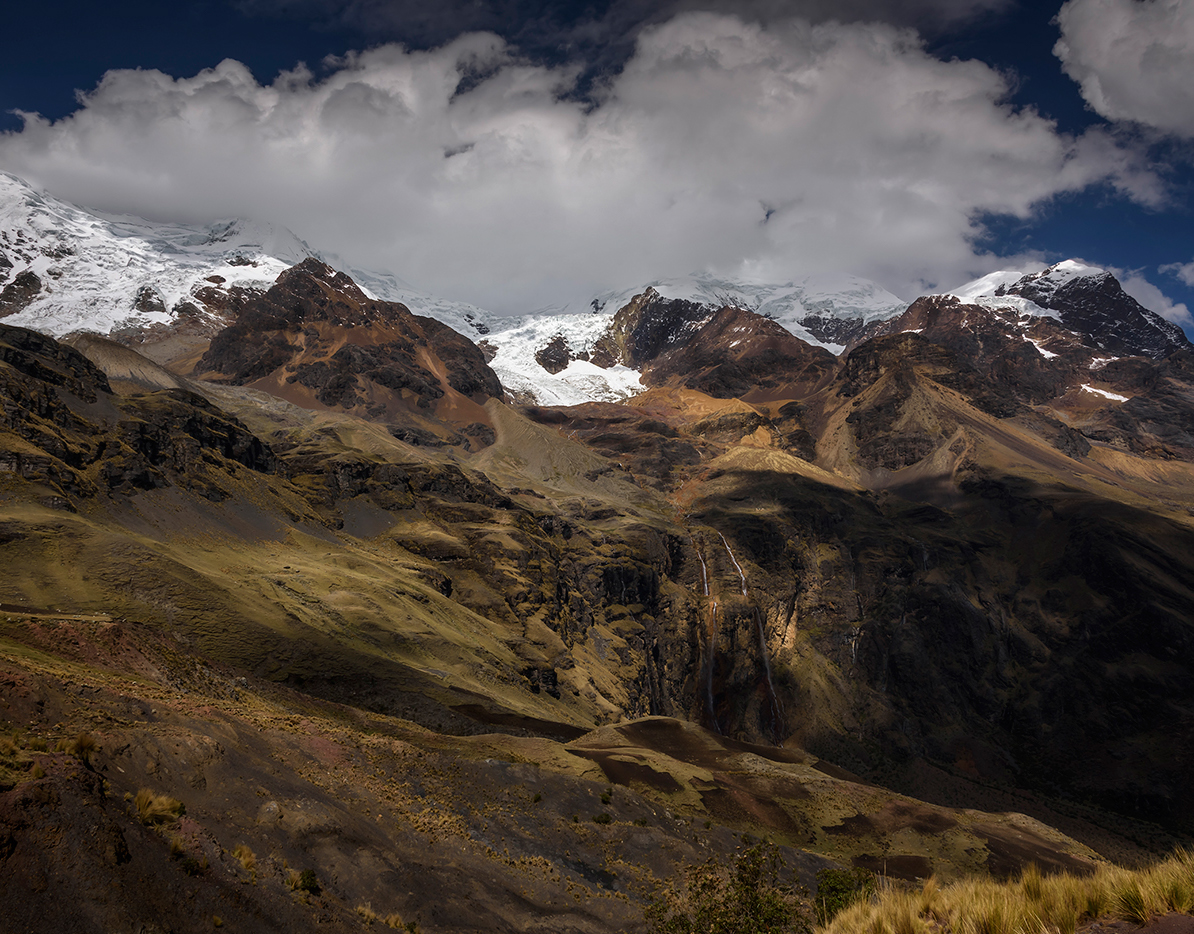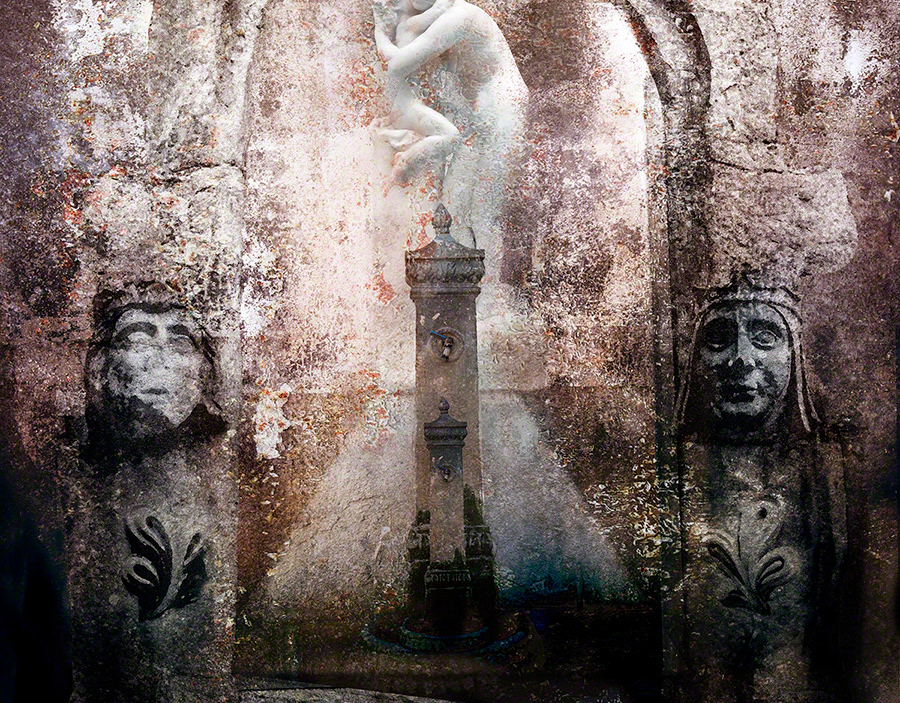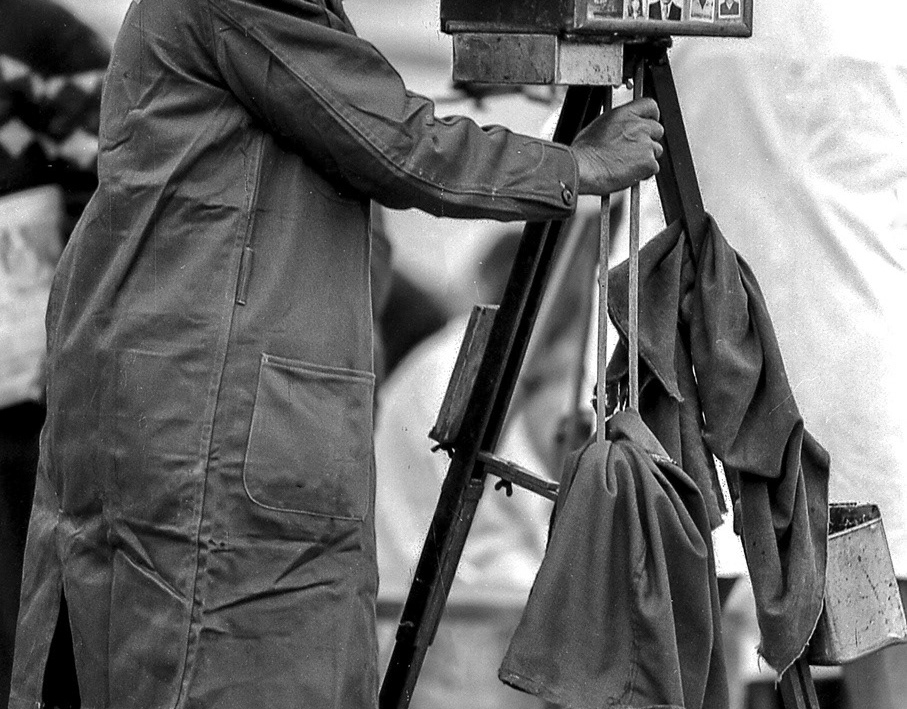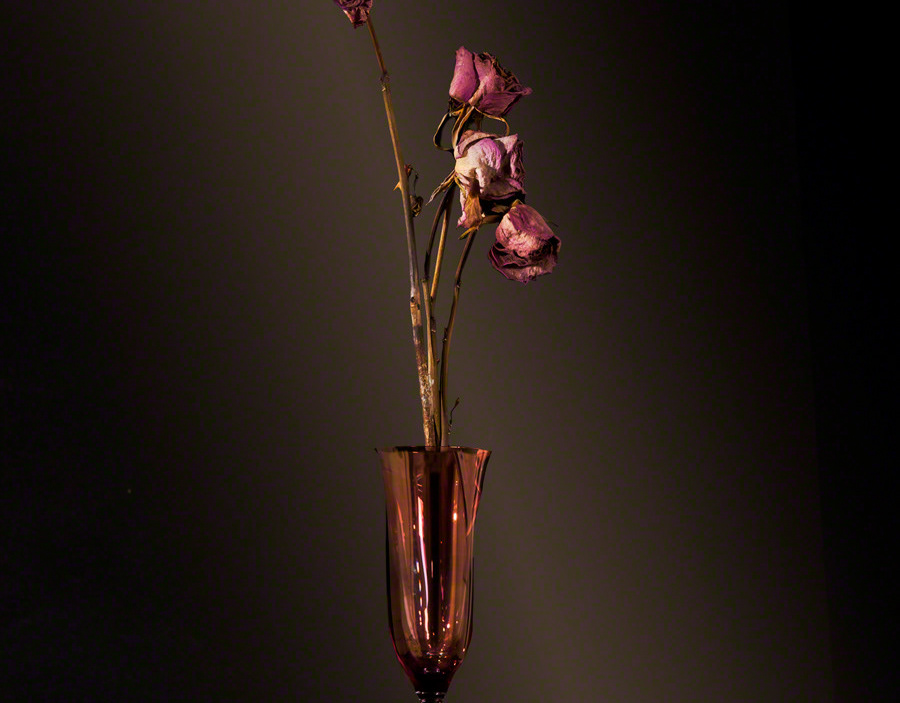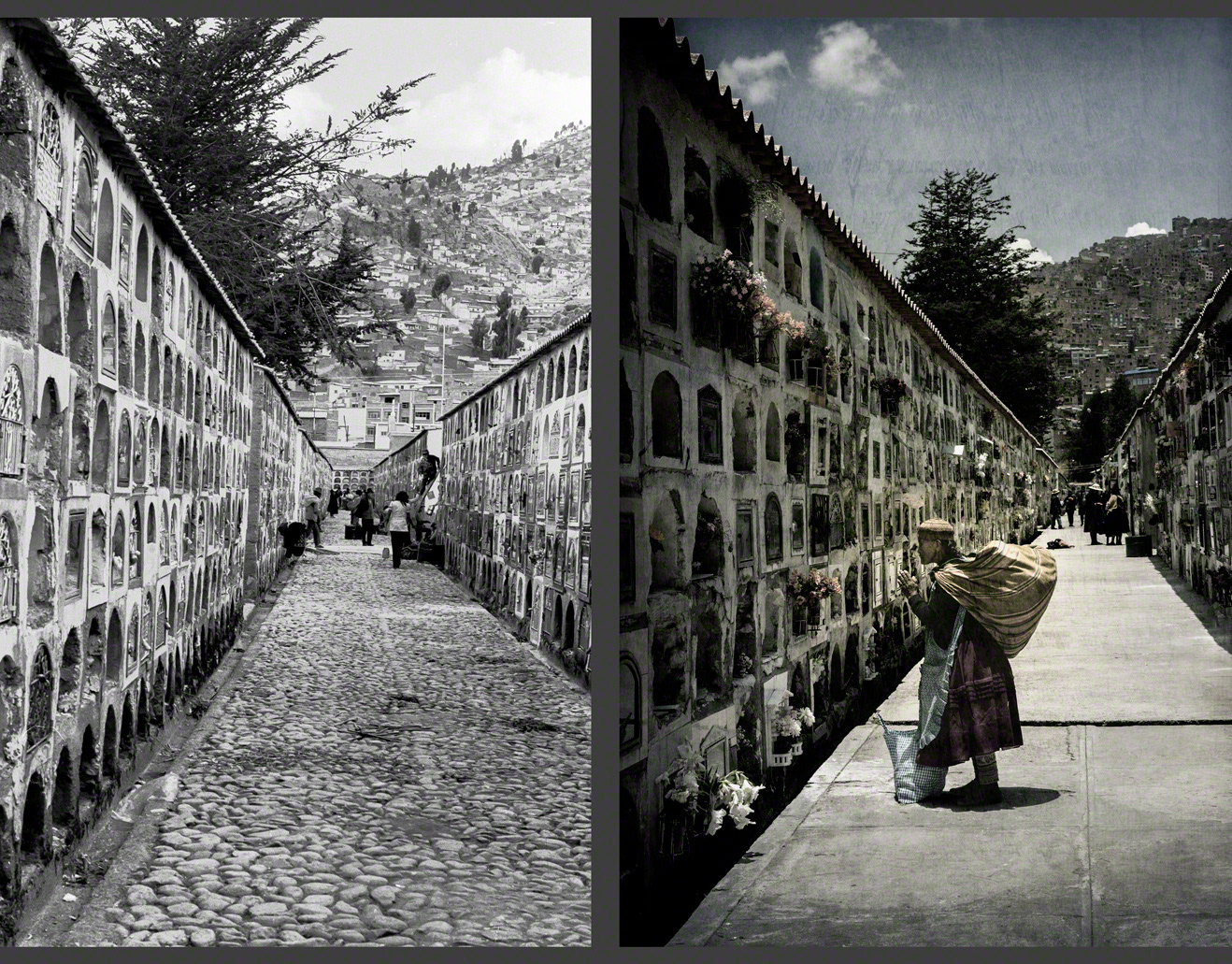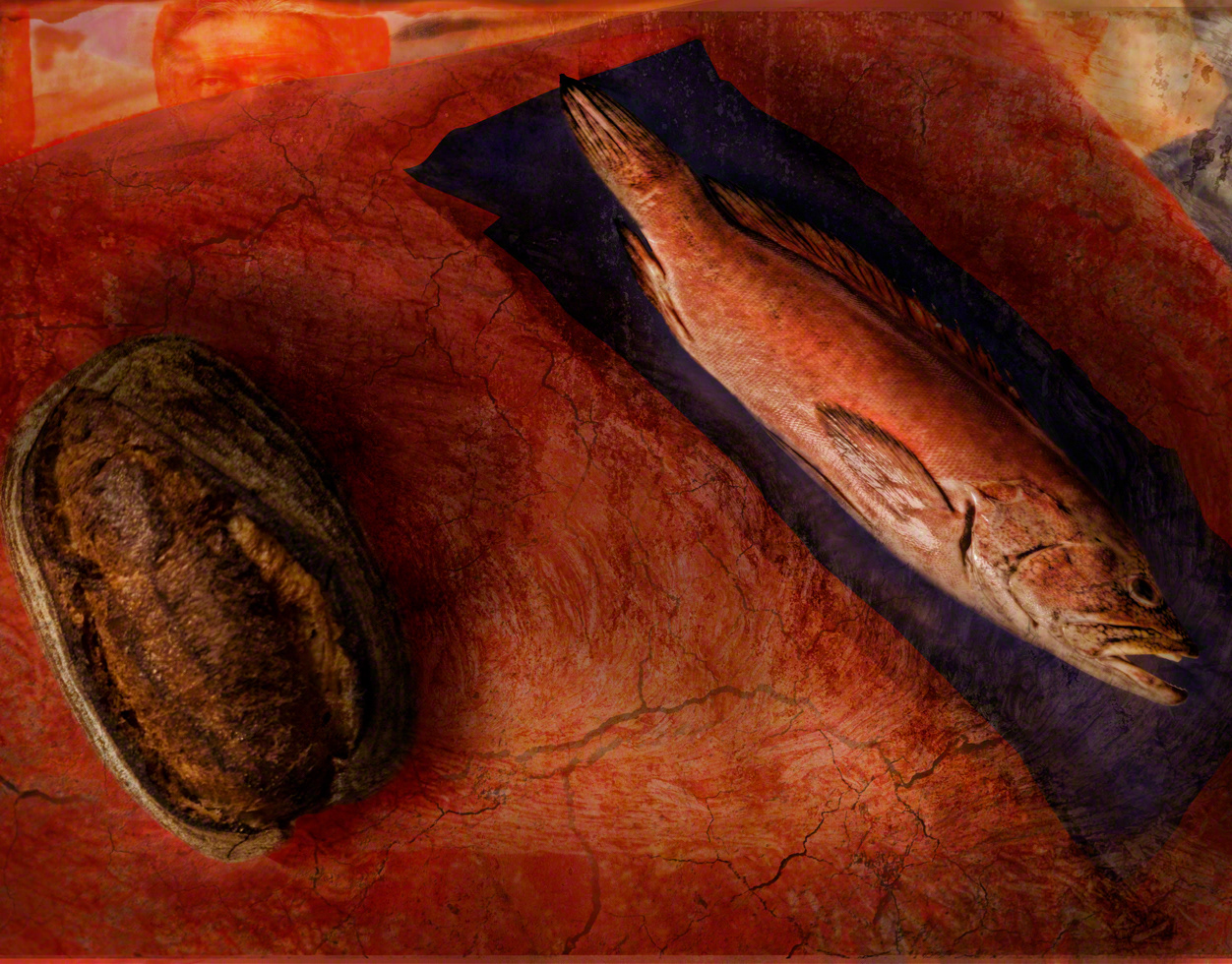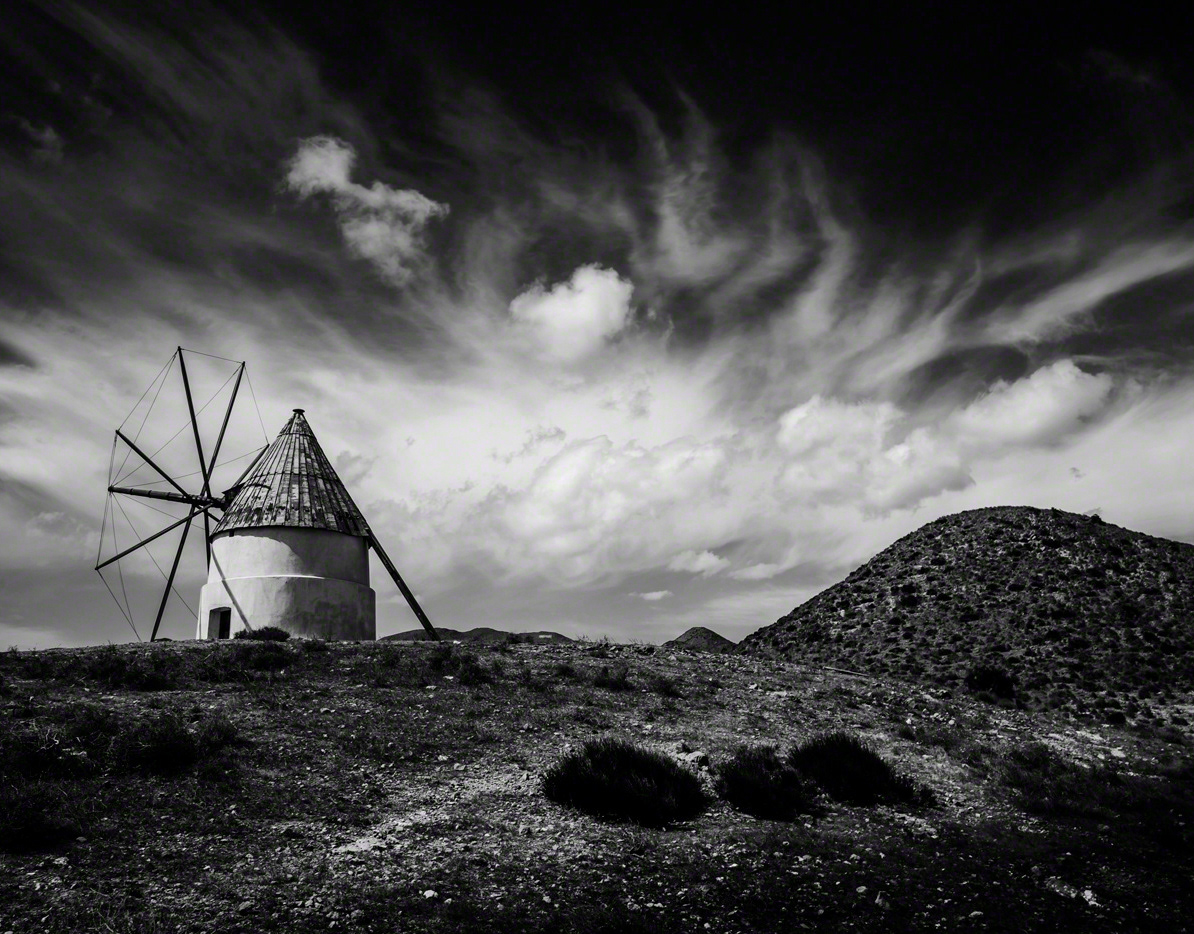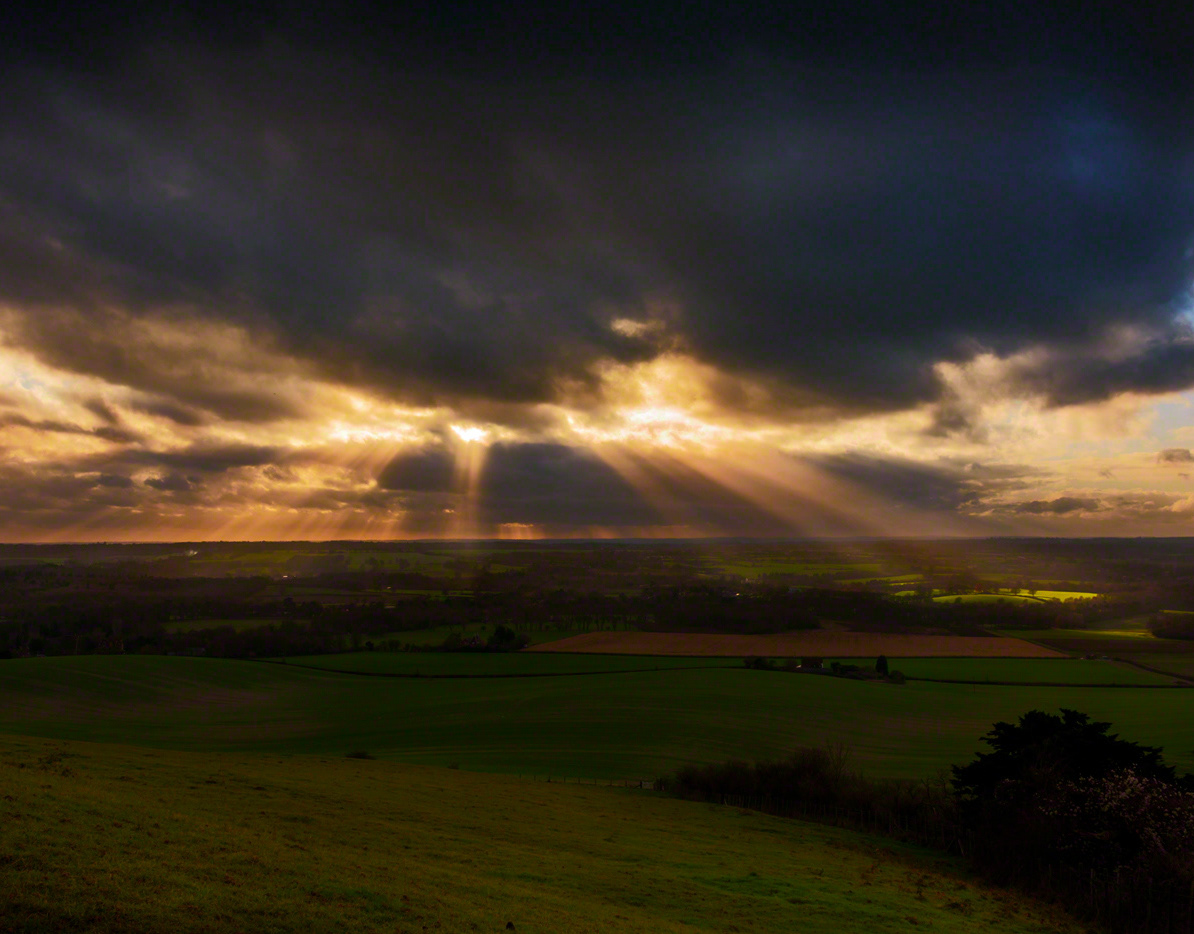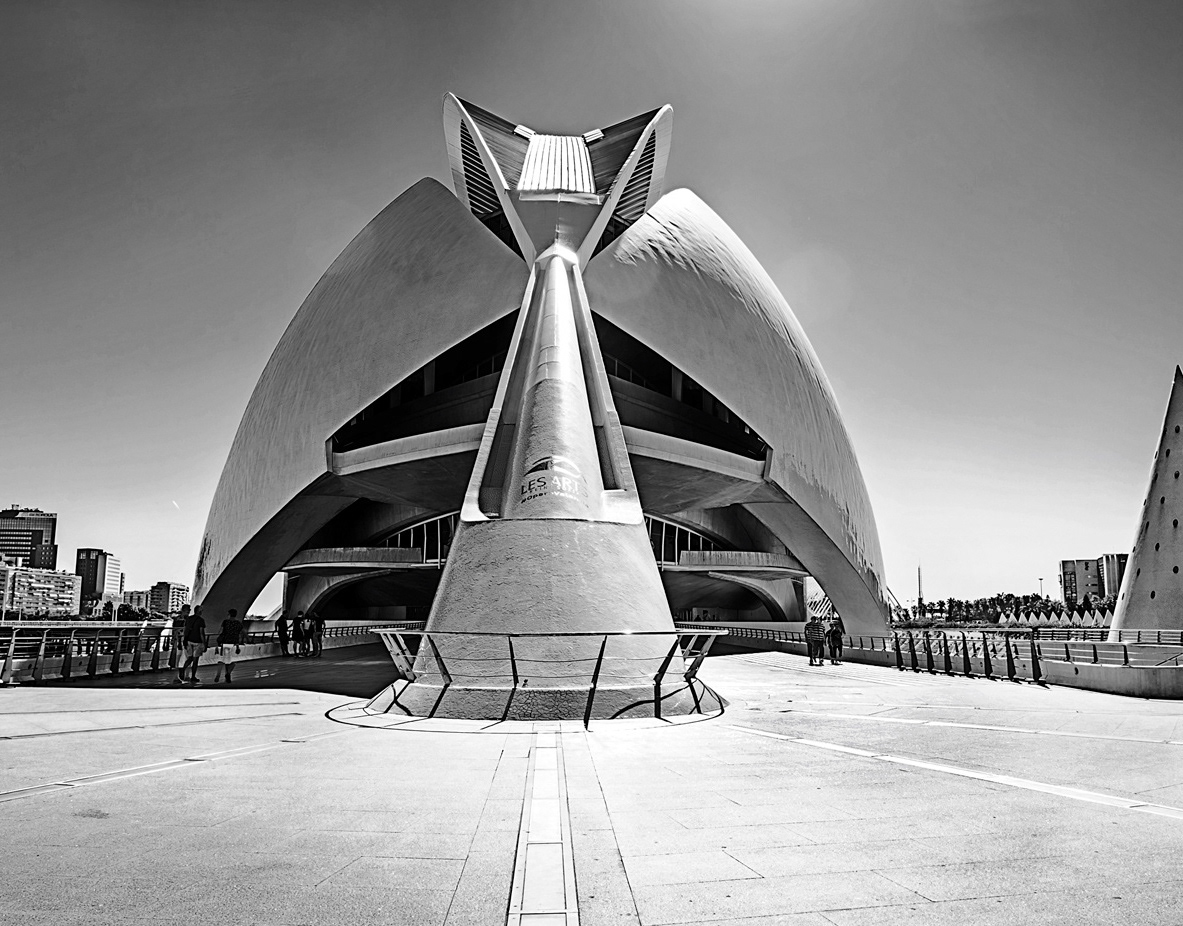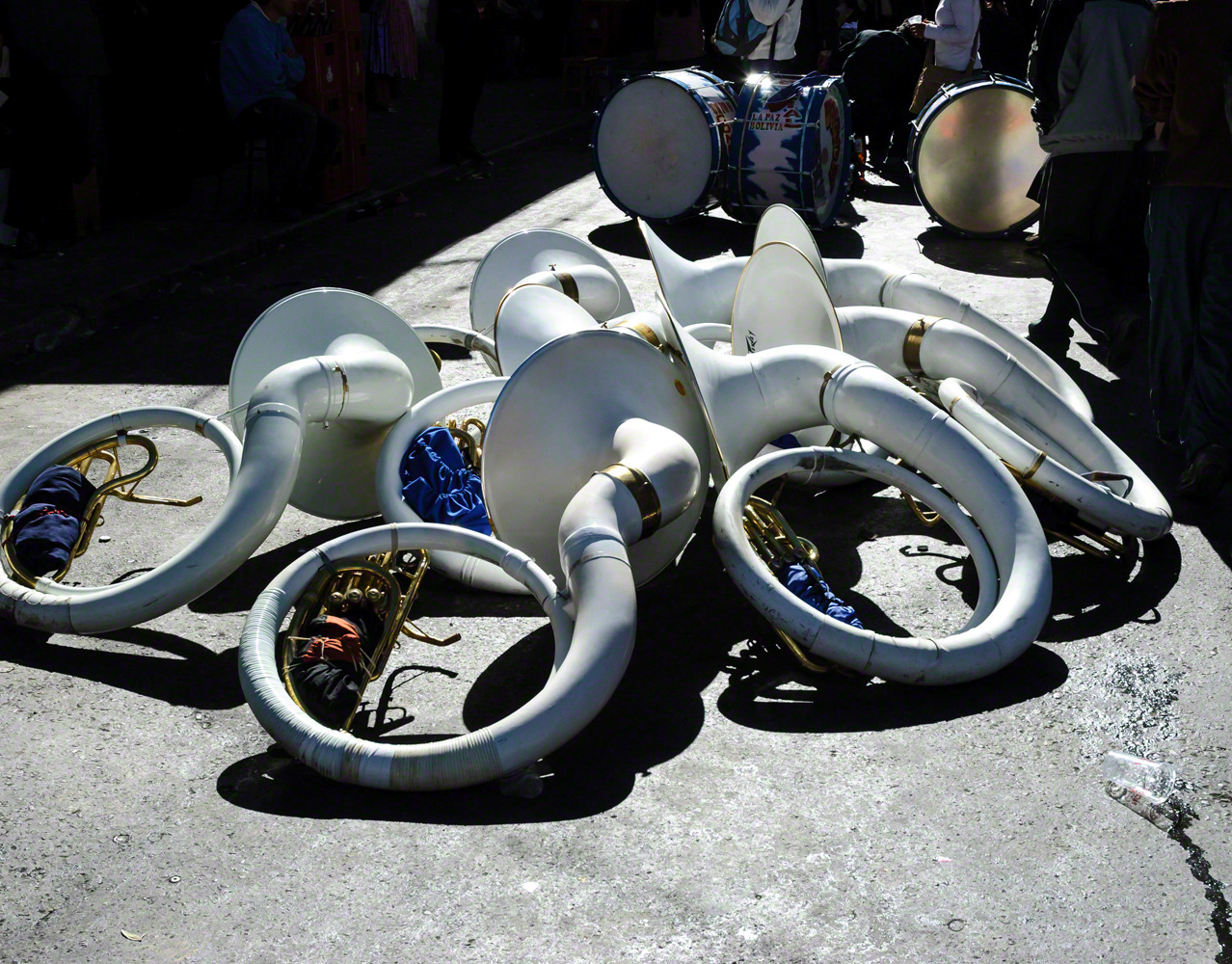Gran Poder: the musicians
Inevitably it is necessary to give a historical perspective of this yearly festival that takes place in the city of La Paz, Bolivia. The celebration transforms and stimulates the social life of La Paz every year, emanating from a particular way of understanding and living Andean Catholicism. The Parade begins with a procession through the western part of the city. This procession is central to the event, involving 40,000 devotees who dance and sing in an offering to the patron saint. The dance has a sacred significance for the sixty-nine fraternities involved, which are greeted in the streets in a euphoric atmosphere where the music of 7,000 musicians resonates.
It is so owe inspiring that it is rightfully a UNESCO Wold Heritage event (Intangible Cultural Heritage of Humanity).
The image venerated with dance and music is believed to have arrived in the city at the founding of the convent of the Mothers of the Sacred Conception on the 8th of December 1663.
